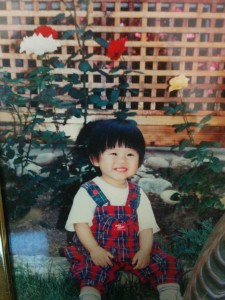I had never been away from home by myself until Saturday, September 3, 2011. My parents left me. No, they didn’t abandon me. They helped me move into first-year residence and then they flew back home to Toronto. My dad was wearing sunglasses but I knew he was starting to well up. I kept my composure as I saw them drive away. But once I got back to my dorm I just cried. Ironically, one of the biggest reasons I chose UBC was because I didn’t want to stay at home! My grandparents and my parents basically did everything for me. They would drive me to school and pick me up from school even in Junior High when it was only eight minutes away by walking. They cooked for me, washed my clothes, and gave me money. So I knew that if I didn’t go away for university, I would be missing out on the opportunity to grow up and be independent. I think I was okay for the first couple of weeks but I felt alone.
Sunday, September 4, 2011. In Toronto, I knew some people from a church here in Vancouver because they came over for my church’s Summer Youth Conference. So on Sunday morning, I woke up and went to their church. The topic of the message was “The Solitude of Christian living”. The speaker really made me think about what it meant to be alone and to see it as a chance for me to grow as a Christian. In the end, I felt really comforted by the message because I knew that there was purpose to solitude.
Sunday, December 4, 2011. I actually wrote a tumblr blog post about home because I felt homesick even though I was so close to going home for the winter break. I talked about how I stayed in touch with my family by texting and MSN (now we Skype). But in a few weeks, I would get to go home and feel at home.
Today, as I’m telling you my story about my home, a lot of things have changed in my past four years in Vancouver. People always ask me, “do you like Toronto or Vancouver more?” My first two years here I always said Toronto. And now, I say “Well…. West Coast living is really nice.” I even think Vancouver winters are kind of cold now even though I survived the Icestorm of 2013 back in Toronto. It’s true, Vancouver feels more homey to me and that’s probably because I have grown and made a little home here. At the same time, I am still connected to my home in Toronto. So I guess you can say that I live in two places at once.
My faith is a huge part of what home is to me. Since we have a connection between the two meeting places in Vancouver and Toronto, people ask me how I like the fellowship in Vancouver. I say that it’s good because it feels like home. This doesn’t mean that the way I worship with brothers and sisters in Vancouver is exactly the same as in Toronto. It means that I feel at home and I feel that it’s a nurturing environment. Without making it sound like ritual, I know that I can connect to home through my faith because we are learning similar lessons and sharing in our belief.
Two years ago, I had a huge craving for beef tendon. My grandma makes it so well that the tendon melts in your mouth. So I called my grandma and she gave me the recipe. As silly as it sounds, whenever I make beef tendon, I always think about my grandma and all the delicious food at home. Even in the small things, I am reminded of home. On the other hand, when I am back in Toronto, I have taken the Vancouverite way of saying “thank you” to the bus driver even when exiting from the back doors. My friend also teases me for dressing like a West Coast girl with my TNA, Lululemon, skinny jeans, and TOMS. I laugh because it’s true. Vancouver has changed me even if sometimes I don’t like to admit it such as when I feel cold!
One sister from Toronto who married a brother from Vancouver told me “Don’t forget where home is!” before I left. Today, I acknowledge that I have a home in Vancouver and I have a home in Toronto because I am that home. My family, my friends, and my living situation are all a part of this home. It’s taken me a while to understand and accept this concept but I can say that I love my home, it feels good, and this is where I am.
Works Cited
Chen, Jasmine. “Home.” Tumblr. 4 Dec. 2011. Web. 30 Jan. 2015.
Kwok, Timothy. “The Solitude of Christian Living.” Vancouver Christian Assembly, 4 Sept. 2011. MP3.

